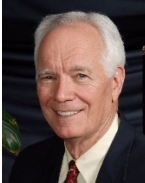University HealtH systems since privatization

$900 million boost to state treasury since privatization
Mark Twain said never to let the truth get in the way of a good story. As someone who deals in the currency of truth – numbers – and who also prides himself on being an above average storyteller, I am happy to report that that there is a good story to tell in North Louisiana, and it’s all about the numbers.
I was recently approached by BRF, formerly Biomedical Research Foundation, to conduct an economic impact study related to University Health System. This request followed a larger project my team at Loren C. Scott & Associates completed related to the privatization of the state’s public charity hospitals. In that earlier report, I found that privatization of the once-public hospitals, nine in total, an initiative of then-Gov. Bobby Jindal, provided a positive boost to the state treasury of $2.7 billion.
This $2.7 billion boost flowed in at a time when legislators had been, and continue to, grapple with our state’s budget deficit.
Having already overturned this publicprivate partnership “rock,” I agreed to follow up with an individual study on what we identified as the University Health Region –- 21 parishes the hospital system primarily serves. University Health System, with hospitals in Shreveport and Monroe, formed under BRF in 2013. The two hospitals, formerly LSU Health Science Center hospital and E.A. Conway in Monroe, became University Health Shreveport and University Health Conway.
Privatization as a whole, we knew, was an overwhelming financial win of $2.7 billion for the state treasury. For this report on University Health System, we asked ourselves, “How much of this $2.7 billion came from the University Health System, and what was privatization’s impact on the University Health Region?” We found that $902.5 million, or 34 percent of that $2.7 billion came from University Health System alone. We found that privatization’s impact over 2013- 16 on the University Health Region included the following:
$1.05 billion in new business sales in the region.
Just under $400 million in new household earnings in the region.
An average of 2,818 new jobs in the region.
An additional $18 million in locally collected taxes in the region.
University Health System/BRF is by far the largest, in terms of contributions to the state, of the eight private partners who took on the state’s charity system.
This is due, in part, to the great amount of money – more than $461 million – of the federal government matching monies for physician salaries in the University Health System. This money being paid to physicians became eligible for a federal match at the time the hospital system was privatized. Only the New Orleans Region came close to the University Health Region’s number, and it was 26 percent lower than that of the University Health Region.
Other new revenue sources that make up the $902.5 million flowing into the state treasury from University Health System include lease payments and their federally matched payments, called Federal Medical Assistance Percentages (FMAP) in a total of $383.2 million, and capital expenditures the public-private hospital partners were paying to repair, equip and update state-owned property. These capital expenditures would have had to have been paid by the state if not for privatization. University Health System provided 41.5 percent, or $58.2 million, of the total amount provided by the private hospital operators.
Looking back to 2013, it can be said that it was a very positive financial move for Louisiana to privatize its charity hospital system. In fact, Louisiana was the last – save the state of Hawaii – to privatize its hospitals. If privatization were not deemed a positive move in terms of finances and patient care, would every state before us have done so?
Finally, privatization of University Health System and other hospital systems in the state not only generated billions in new revenue and savings, it resulted in better quality of care, especially for those on Medicaid and the uninsured. Reduced wait times, significant expansion of specialty services and improved outcomes were generated after private entities took on the hospital systems.
At University Health System, for example, patient queues went from 12,000 to 1,200; MRI wait times from 60 days to two days; and CT scan wait times from 21 days to one day.
Patients benefitted from expanded specialty services, including advancements in the hospitals’ cancer radiation treatment options and new therapies and treatments for heart failure. University Health System restored its Level 1 Trauma Center Certification, obtained a three-year accreditation from the Joint Commission and received other certifications since privatization. And, as often we see when a public entity becomes privatized, there were tremendous efficiency gains such as improved billing collections and various upgrades. That is the nature of business – you take pride and better care of it when it is your own.
To read the full report and to understand more about University Health System’s impact on the state and privatization’s impact on North Louisiana, visit www.tinyurl.com/ UniversityHealthStudy.
Dr. Loren C. Scott is former chair of economics at Louisiana State University. His firm, Loren C. Scott & Associates, has provided economic consulting for 35 years to clients from a wide range of industries.
